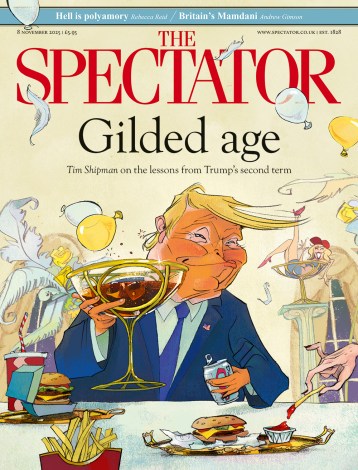
I knew I was in for a treat when I drove up to the newly opened Butterfly World along Miriam Lane. An affectionate homage to Dame Miriam Lane (Rothschild), the great conservationist and butterfly enthusiast, was a good start, but so was the fact that the banks on the side of the road to the car park were carpeted with rainbow-coloured meadow annuals — blue cornflowers, yellow Californian poppies, pink corn cockle, scarlet poppies –— all flowering fit to bust.
Two thirds of the 27-acre site at Chiswell Green, near St Albans, is covered with these annuals, in varying combinations of 65 species. The seed has come partly from Emorsgate Seeds and partly from sources across the temperate world; it has been ‘hydro-seeded’ on to Grade 3 agricultural land, from which the top soil has been removed. These enlivening annuals are the idea of Ivan Hicks, landscape designer for the project and best known for a certain surreal quality to his garden layouts, such as the ‘Enchanted Forest’ at Groombridge Place (he was once Edward James’s head gardener at West Dean, so it figures). The entire site, if looked at from above, is in the shape of a giant butterfly and, at the visitor centre, I was greeted by two absolutely gigantic wooden beehives, which cleverly conceal the lavatories.
The founder of Butterfly World is Clive Farrell, an expert lepidopterist who has worked for 12 years to bring the idea to fruition. It is obvious why he might want to do it, and why conservationist heavyweights like Professor David Bellamy and Dame Miriam Rothschild should have become involved, since 70 per cent of our native butterflies are in decline. The trick will be to make butterflies so attractive that one million visitors a season will want to come to see them.
Certainly, its position on a prominence in the angle between the M1 and M25 in Hertfordshire should help, as will ‘Future Gardens’, 12 gardens laid out side-by-side to show how garden designers can use sustainable materials and attract butterflies, while also pushing out the boundaries of contemporary garden design in ways that are thought-provoking, without being gimmicky. The four months they are in place makes them a different proposition from ephemeral flower-show gardens. Each designer was given £25,000 for their garden, so that they did not risk vitiating their energies, or compromising their vision, in the search for sponsors.
Some are pure conceptual gardens — ‘one-liners’ — suitable for just the season between June and October, while others have a more garden-friendly, permanent-looking quality. Of the conceptual gardens, ‘Anthroscape 3’ by Tony Heywood is creepy and off-putting, with its vision of nature distorted through modern media, but Peter Thomas’s ‘Metamorphosis’ is both intriguing and strangely attractive: there are two blue-painted frames, like fruit cages without netting, from which suspend 280 butterflies, made by local schoolchildren. As the summer wears on, the turf underneath, full of wildflowers, is gradually overtaking and masking the artificial butterflies. The idea of Nature winning the day is not very original, but the way it is done definitely is.
Marginally more conventional are Andy Sturgeon’s ‘Urban Greening’, focusing on the importance of green spaces in cities, and Jane Hudson and Erik de Maeijer’s delightful ‘Nest’, where four enormous redwood ‘eggs’ are set in a ‘nest’ of woven willow and dogwood and lined with Stipa tenuissima.
Children are, predictably, an important target audience for Butterfly World: the day I visited in early August was a ‘family fun day’ and children had arrived dressed as butterflies to gain free admission. They seemed to be having a jolly time talking to the Very Hungry Caterpillar and climbing up giant flowerpots in Hicks’s Through the Flowerpot garden, one of three permanently installed gardens, the others being the Theatre of Insects, where gabions (wire cages) encase discarded household items which find a second life as homes for insects, and the Spangle Gall Garden, with its 11 ‘installations’. These installations are variable in their appeal: the best for me was Thyme Time, where melted clock faces (in homage to Dali’s ‘Persistence of Memory’, presumably) are mixed with thymes.
There is much still to do, in particular the building of an enormous 100-metre-diameter ‘tropical rainforest biome’ to house tropical butterflies, as well as research facilities. And it is still early days for attracting butterflies, too. When I visited, there were plenty of bees in the annual flowers, but only Large White and Small White butterflies, which most of us know well from our cabbage patches. I went on to visit the Royal National Rose Society’s Gardens next door (irritatingly, I had to drive in a roundabout way through Chiswell Green to get there, without any help from local authority signage) and spotted Painted Lady, Peacock, Large and Small Tortoiseshell butterflies in the rose and perennial borders. No doubt the organisers of Butterfly World are hoping that, as with one of Ivan Hicks’s installations, it is just a matter of thyme.
Butterfly World is open every day until 4 October. It will be completed in 2011.





Comments